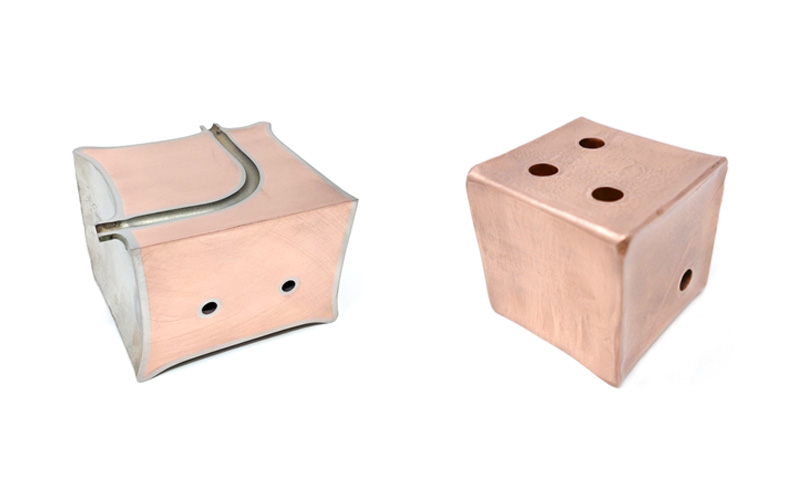
Plasma facing components (PFCs) within a fusion reactor are subject to extremely high heat fluxes, high-energy
particle bombardment, and chemical reaction. Heat sink materials must be able to handle high temperatures and effectively dissipate heat, as well as withstanding the harsh corrosive conditions and maintain structural integrity. The heat sink material must also be compatible with the plasma and not introduce any impurities or other contaminants that could affect the fusion process.
In addition to the material requirements, the design and method of manufacture of the heat sink is critical and the creation of cooling channels presents a huge challenge due to the intricate and complex geometries involved and the need for high precision.

Pictured above:
On the left - 316L cooling channels within a CuCrZr heat sink (cross-sectioned)
On the right - Hollow cooling channels within a CuCrZr heatsink (not cross-sectioned)
Dimensions of the demonstrator are: 10 x 10 x 10 cm3

Pictured above:
On the left - Tensile samples fractured in the gauge section of the CuCrZr indicating good bonding quality of the 316L/CuCrZr interface
On the right - Uniform mixture of copper with iron at the interface due to diffusion of copper into the
iron phase

Pictured above:
On the left - Configuration of the cooling channels within the heat sink
On the right - Tensile properties of the 316L - CuCrZr interface (Sample ID 1-5) and matrix CuCrZr (Sample ID 6-10)